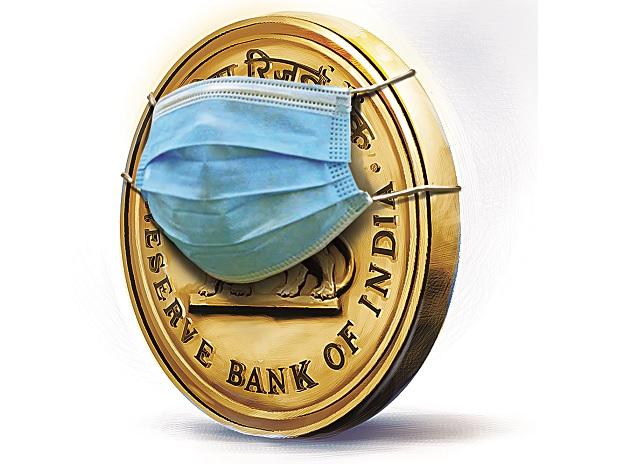Dasarathi Mishra
RBI Governor Shaktikanta Das has risen to the occasion to combat the impact of CoVID-19 crisis on the Indian economy. He made a few announcements in the seventh bi-monthly monetary policy statement March 27, to mitigate the destructive effects of novel coronavirus. The “war effort” of RBI involved both conventional and unconventional measures, which placed the emphasis on revival of growth and preservation of financial stability.
The RBI policy affects the informal sector and the financial system, including banking, and the corporate sector. The policy acknowledges that economic activity and financial markets are under severe stress. Let us discuss the policy measures under three broad heads: Impact on financial system including liquidity, impact on banking sector encompassing loans, NPAs and banks’ balance sheets.
The stimulus package announced by the central bank includes a sizeable reduction of policy repo rate by 75 basis points (from 5.15 per cent to 4.4 per cent) – a record in the recent past. Simultaneously, the fixed rate reverse repo rate, which sets the floor of Liquidity Adjustment Facility (LAF) corridor, was reduced by 90 basis points to 4 per cent.
Repo and reverse repo operations are popular instruments by which the RBI manages liquidity in the system. Under repo operations, the RBI injects liquidity into the banking system. The central bank buys approved securities and extends money to banks. Under reverse repo operations, RBI absorbs liquidity as it sells securities to banks and gets money. Fixing reverse repo rate at 4 per cent will discourage banks from placing their surplus funds with the RBI. They can instead use it for on-lending.
Massive liquidity injection is unleashed. The three-pronged approach comprising Targeted Long Term Repo Operations (TLTRO), reduction of Cash Reserve Ratio (CRR), and enhancing the limit of Marginal Standing Facility (MSF) will inject `3.74 lakh crore into the banking system.
These steps are designed to place more and more funds in the hands of banks, and, ultimately with borrowers.
TLTRO will tide over adverse effects on economic activity as large-scale sell-offs in the domestic equity, bond and forex markets have intensified redemption pressures. Under the scheme, the RBI will conduct auctions of targeted term repos of three-year tenor for an aggregate of `1,00,000 crore. Liquidity availed by banks under the scheme has to be deployed in corporate bonds, commercial papers and non-convertible debentures (NCDs). Significantly, within a few hours of the monetary policy statement being announced, RBI conducted a TLTRO for a notified amount of `25,000 crore March 27. The pro-rata allotment percentage was 41.33 per cent.
CRR is a direct monetary instrument in the arsenal of RBI. According to section 42 of the RBI Act, 1934, banks are required to maintain cash balance with RBI in proportion to its Net Demand and Time Liabilities (NDTL) in India. Accordingly, the reserve bank, having regard to the needs of securing the monetary stability in the country, prescribes CRR for scheduled banks. According to the monetary policy, CRR for banks is reduced by 100 bps to 3 per cent of NDTL, with effect from March 28, for one year. This reduction will release primary liquidity of about `1,37,000 crore and increase lendable resources of banks to that extent.
MSF is a supplementary window to enhance liquidity in the system. According to the announcement, RBI has decided to increase the accommodation under MSF from 2 per cent of the Statutory Liquidity Ratio (SLR) to 3 per cent. This measure will be available up to June 30. This facility will give liquidity comfort to the banking system to the extent of `1,37,000 crore.
Considering the rapidly evolving financial conditions and taking into account the impact of disruptions caused by crisis, as an interim measure RBI extends the window timings of Fixed Rate Reverse Repo and MSF operations to provide market participants with greater flexibility. The new window timings would be from 09:00 hrs to 23:59 hrs.
The three measures discussed will inject liquidity of `3.74 lakh crore into the system. RBI acknowledges that alongside liquidity management of the system, it is important to mitigate the burden of debt servicing. According to the central bank, such steps “will go a long way to prevent the transmission of financial stress to the real economy and ensure the continuity of viable businesses and provide relief to borrowers in these extraordinary troubled times”.
Concomitantly, two remarkable steps were taken: moratorium on term loans and deferment of interest on working capital finance. Accordingly, in respect all term loans (agriculture term loan, retail loan and housing loans, credit card instalments), all commercial banks, co-operative banks, NBFCs and housing finance companies are to grant moratorium of three months on instalments falling due between March 1 and May 31. Instalments will include principal and interest components, bullet repayments, Equated Monthly Instalments (EMIs) and credit card dues. Thus, the repayment schedule will be shifted by three months. As regards working capital finances, the interest payment will be deferred in respect of the interest applied during March-May 2020. Lending institutions will need to re-calculate drawing power by reducing margin and reassessing working capital cycle. The rescheduling of payments will not qualify as a default for supervisory reporting and reporting to credit information companies. RBI also states that lending institutions need to frame a board-approved policy for the purpose.
The way forward is clear. With massive policy rate cut, deposit rates are bound to be impacted. It will be a challenging time for depositors, particularly senior citizens.
Das, in his press conference, emphasised that the banking sector in India continues to be strong. People should repose confidence in the banking system and banking regulations. People should not indulge in panic withdrawal of deposits from public and private sector banks. Das further underscored the need to move towards digital payments.
The writer is former chief general manager, Reserve Bank of India.
